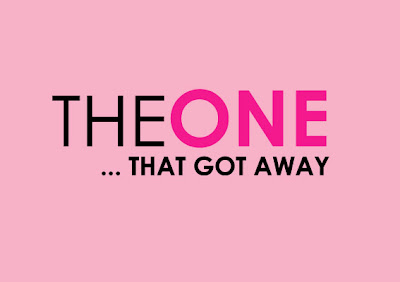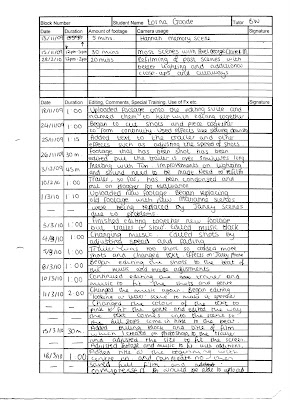- a magazine front cover featuring the film
- a poster advertising the film
- a homepage website for the film
Magazine Front Cover.
This blog contains the research and production of my Media Studies A2 coursework
Analysis of Trailer
The trailer starts with a memory. I decided to show this through different effects as well as the setting of the scene; a park. This setting is used to represent the ideology of a past memory and nostalgia as well as innocence. The effects I have used with this clip also help to add to this idea. I have slowed down the speed of the shot and added a grain effect to better show the audience that this is a memory. The voiceover from the main character - which also acts as a sound bridge between the memory and the dining room scene and introduces the main character - supports the idea of a memory that he is telling his friends. The fade between these two shots reinforces the ideology of a dream or memory and suggests the narrative is coming back to the present.
The non-diegetic music playing in the background of the memory scene is ‘I Can’t Take My Eyes Off You’ by Andy Williams. This is an old and classic love song with a slow-paced introduction which I thought would suit the narrative of this beginning scene.
Humour is intended to be created through the character performance from the main character’s friend, Jeremy and his reaction to Tony in this shot-reverse shot. There is then a close-up of Tony to show his disheartened reaction. This quick exchange is intended to show the audience the main character’s idea which is the narrative of the trailer, and Jeremy’s attitude towards it.
Another non-diegetic song begins to play to introduce the text title and the name of the character. The colour pink is used to represent the genre of the film. In this title the text is centred and together which differs from the others in the trailer. This is because the titles after the disruption within the narrative as he loses his job and wife in the same day which changes his everyday routine and provides a barrier that he must overcome. The disruption within the narrative is reinforced by the change in music from a the Ordinary Boys ‘I Luv You’ to a faster, more upbeat song by the Barenaked Ladies called ‘One Week’ which is about a break-up. The change in the title style also helps show the audience this. The text becomes diagonal to show the disruption.
From 00:22 until 00:39, mise-en-scene is relied on to show the narrative as props are used to show that Tony has lost his job – the desk plant and box of stationary and papers. The bin bag thrown down is another use of props to provide the narrative of Tony being kicked out. This is then reinforced by his wife slamming the door in his face.
The next shot is a medium close up of Tony singing and drinking from a glass which is used to suggest he is drinking whiskey. The lighting in this scene is dark to reflect the characters depression and create an atmosphere. In this scene another shot-reverse shot is used to create humour at the reaction of the friends he is staying with. The non-diegetic music starts again at the end of this shot, similar to that used earlier in the trailer. This repetition is intended to create humour.
The medium shot in which the characters are playing Scrabble is intended to create a homely and slightly classic atmosphere which Tony is intruding on.
The next scene in which Tony is emptying out the bin bag of his belongings and finds the letter, contains a series of close ups that start from a high angle and slowly become low angled shots. This is to show Tony’s growing confidence now that he’s found Hannah. The cut-away shots of the letter which are transitioned over a medium close up of Hannah create a connection between the letter and the earlier shot of Hannah. This continues the narrative and shows a change in the storyline.
The non-diegetic music changes again to ‘I’m Gonna Be (500 Miles)’ by The Proclaimers. This music signifies the journey that Tony is about to start and the singing of the song kicks in when he’s looking through phonebooks in order to find her.
The scene before this shows an exchange and Tony telling his friends about a phone conversation. The quick shot-reverse shot technique that is used shows the conversation which is happening in different places. Tony and Alison are on different sides of the shot to represent this too.
To end the trailer, there is quick editing of medium close-ups of the cast which is a convention I had found when analysing other film trailers. There are also titles that I created on Photoshop (the film title, billing block and soundtrack information) that were similar to the conventions that are in film trailers. There is also a title for the release of the film with the tagline 'Search for it, Summer 2010' which directly refers to the narrative of the film and informs the audience of the release date.
Teaser Trailer:
I also created a 30 second teaser trailer. This would be distributed a month or two before the full trailer like the one above so audiences will become curious about the film.
The trailer contains a similar sequence to the full trailer in which Tony is being kicked out by his wife. This sequence creates a sense of hopelessness and mystery as it shows the audience him being kicked out but not what happens afterwards.
The text captions are intended to create humour and a juxta-position between the stereotype of a wife kicking a husband out and the humour created with the perfect life collapsing.
The trailer also introduces the main character, Tony as the protagonist and the close-up shots reinforce this. We also see the antagonist is introduced and the mise-en-scene in the shot where Alison is throwing Tony's stuff out also creates this. For example, she is wearing a red dressing gown which suggests that they live together as well as the colour connoting danger.
There is also an enigma created within the narrative of this 30 second trailer as it leaves the audience wondering why the protagonist has been kicked out, who the other girl is and how is he going to get his life back to normal because of this disruption.

